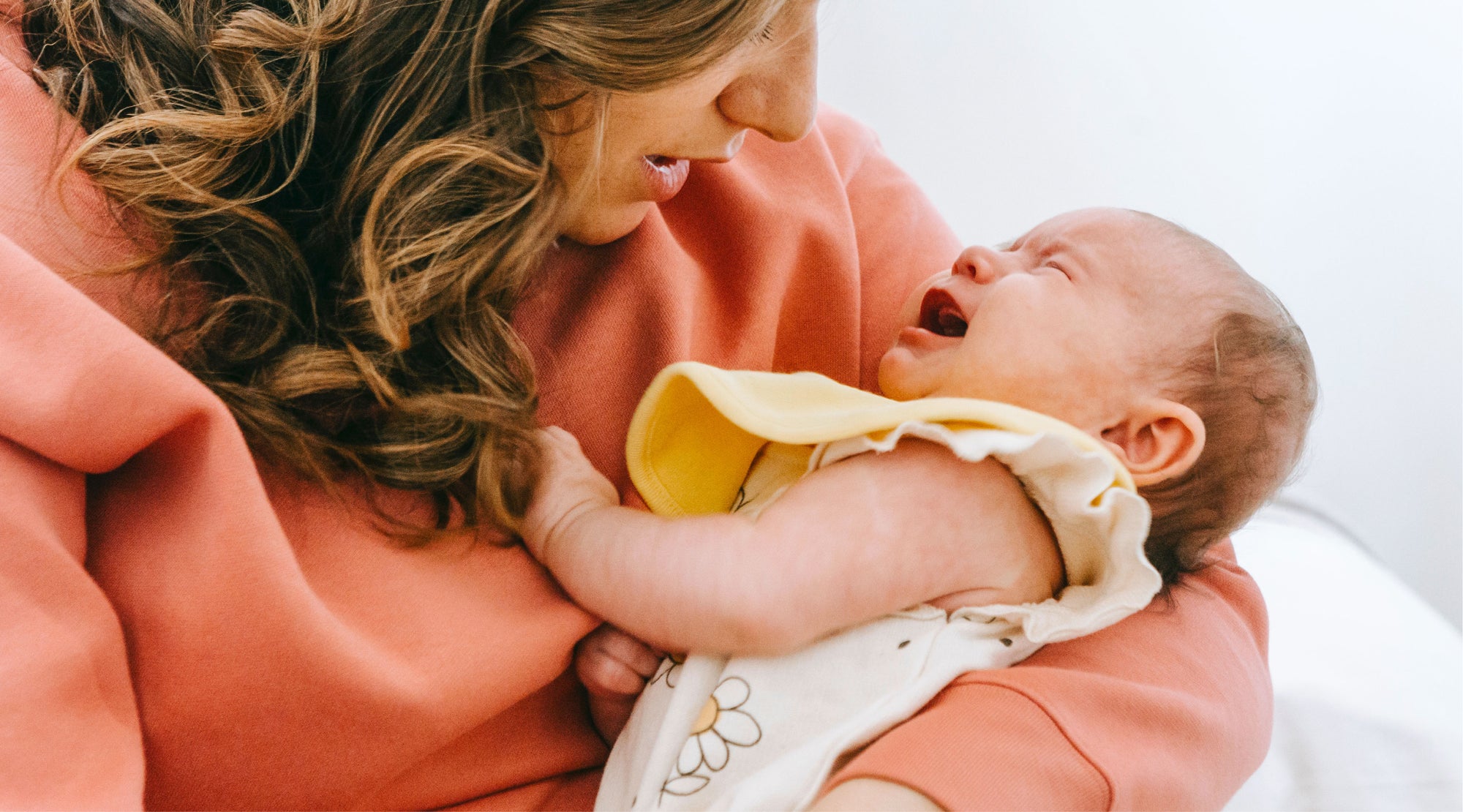

· By Haley Walker
What is Postpartum and How Long Does it Last?
The phase following the delivery of your baby, also known as the “fourth trimester,” is the time period where your body returns to its pre-pregnancy state. Throughout your pregnancy, you hit many of your developmental milestones in pretty consistent 12-14 week increments called trimesters. Although the postpartum phase is broken up into three distinct phases (not unlike your pregnancy) the length of each phase isn't quite as concrete. So what can you expect to experience as you enter into this final phase of pregnancy?
What Are The Phases of Postpartum and How Long Does it Last?
The first phase of postpartum is known as the acute phase and it begins within 6 to 12 hours after childbirth. During this phase your OB/GYN will monitor things like your blood pressure, heart rate, and bleeding. They will also monitor your uterus to ensure it’s becoming firmer. It’s important that you remain under the care of a physician throughout this period as patients are at their highest risk of hemorrhaging, excessive bleeding, uterine inversion, eclampsia, hypertension, and other postpartum emergencies. Mild cramping and discomfort is normal throughout the acute phase –especially while breastfeeding– as your uterus begins to contract to its original size. Vaginal bleeding is common during this time as well.
Suggestions for aiding your recovery during this phase are:
- Take a mild pain reliever at regular intervals to alleviate pain.
- If you had a vaginal delivery, use a spray bottle of warm water after peeing, DO NOT WIPE. An ice pack or frozen pads with witch hazel on your perineum can be very soothing.
- Take a stool softener and drink plenty of water to avoid postpartum constipation.
- Take your temperature frequently to catch any potential infections. Bladder and kidney infections are common if you received any anesthesia that required the use of a urinary catheter.
The second phase – or subacute postpartum period, generally lasts 2 to 6 weeks. During the second phase of postpartum many physical and emotional changes take place, however these changes are less critical to your immediate health than those in the acute phase. If you’re not breastfeeding, many women notice their period returning during this timeframe. You’ll also continue to experience a bloody discharge known as lochia for up to 6 weeks after delivery. Postpartum constipation is also fairly common in the subacute postpartum period, taking a stool softener accompanied by a probiotic like our Women’s Health Probiotic helps to support female digestion, gut health, immunity, vaginal health, and whole-body wellness. The majority of concerns during this phase range from; minor perineum discomfort (for vaginal deliveries) and lingering incision pain or numbness (for those who delivered via c-section), to emotional distress known as postpartum depression. Although this phase typically ends around the 6th week after delivery, it’s important to note that postpartum depression can persist for weeks or months longer if left undiagnosed and untreated. Our Postpartum Mood Support capsules contain essential vitamins and nutrients to support postpartum emotions, stress relief, hormonal balance, and mind + body recovery. However, if your symptoms persist or worsen, contact your doctor. Early intervention for postpartum depression is the best thing for both you and your baby.
Suggestions for aiding your recovery during this phase are:
- Keep any incisions clean and dry. Pat or air dry after showering and be gentle.
- Lanolin can help soothe cracked or painful nipples from breastfeeding. Contact a lactation consultant if you’re having difficulty nursing.
- Start to incorporate some movement into your day — just keep it simple and low impact while your body continues to heal.
- Eat well balanced meals and consume adequate calories. Breastfeeding burns lots of calories, you’ll need to eat more to keep your milk supply up. Foods with potassium can help keep your energy up as well.
- Resume sexual activity with caution. Just because you’re cleared doesn’t mean that you’re ready.
- Nap as often as possible to keep exhaustion at bay.
The final phase is called the postpartum period and lasts approximately 6 months. It’s during this phase that the majority of your physical changes happen. While pregnant, you produce a hormone called relaxin to help your body stretch and prepare for delivery by loosening the muscles and ligaments in your pelvis. During the postpartum period your muscles, connective tissue, and organs will all revert back to their pre-pregnancy state. Some women complain of urinary incontinence when sneezing, coughing, or laughing during this time (and beyond). Doing pelvic wall exercises helps to strengthen these muscles again. A good exercise to try is a kegel pulse. If you’re not sure what muscles to activate during a kegel exercise, try stopping your urine stream mid-pee –the muscles you engage are the ones you’re trying to target. Once you learn the proper sensation, you can do kegels anytime, anywhere. It’s also normal to experience postpartum hair loss during this phase. Women can lose up to ⅓ of their hair volume by the 4th month of their postpartum journey. Taking a postnatal supplement like our Postpartum Hair Loss Gummies can help to alleviate some of the excessive shedding.
Suggestions for aiding in recovery during this phase are
- Be gentle with yourself. Although this is technically when the postpartum period ends, many women don’t feel remotely like themselves for a full year.
- Resume your normal exercise routine –as long as your doctor has cleared you for it.
- Continue to eat well. Taking supplements with B-vitamins can help increase your energy level.
Although pregnancy has a (generally speaking) finite timeline, the postpartum period does not. Not all women will revert to their pre-baby bodies in 6 months. Some women may even experience certain aspects of postpartum indefinitely. Every pregnancy is different and each experience unique. To learn more:




































